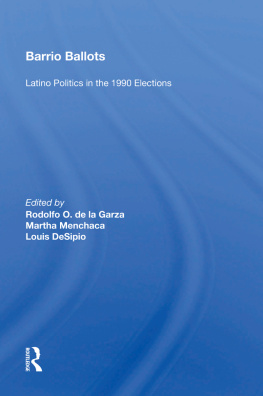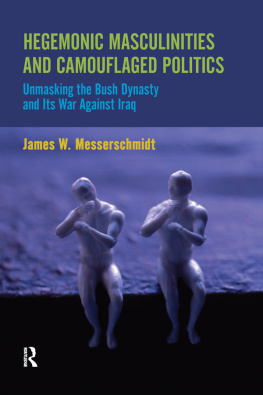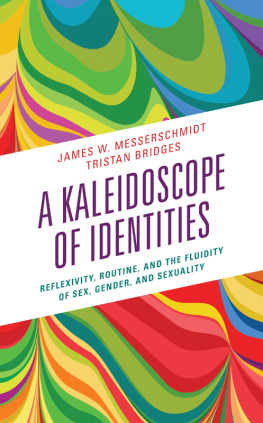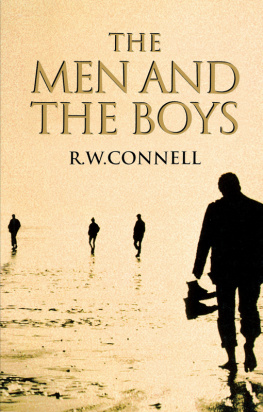Nine Lives
Nine Lives
Adolescent Masculinities, the Body, and Violence
James W. Messerschmidt
University of Southern Maine
First published 2000 by Westview Press
Published 2018 by Routledge
52 Vanderbilt Avenue, New York, NY 10017
2 Park Square, Milton Park, Abingdon, Oxon OX14 4RN
Routledge is an imprint of the Taylor & Francis Group, an informa business
Copyright 2000 Taylor & Francis
All rights reserved. No part of this book may be reprinted or reproduced or utilised in any form or by any electronic, mechanical, or other means, now known or hereafter invented, including photocopying and recording, or in any information storage or retrieval system, without permission in writing from the publishers.
Notice:
Product or corporate names may be trademarks or registered trademarks, and are used only for identification and explanation without intent to infringe.
Library of Congress Cataloging-in-Publication Data
Messerschmidt, James W.
Nine lives: adolescent masculinities, the body, and violence / James W. Messerschmidt.
p. cm.
Includes bibliographical references and index.
ISBN 0-8133-6666-6 (hc.)ISBN 0-8133-6667-4 (pbk.)
1. CrimeUnited StatesSex differences. 2. ViolenceUnited StatesSex differences.
3. MasculinityUnited States. 4. Criminal behaviorUnited States. 5. Teenage
boysUnited StatesPsychologyCase studies. 6.Teenage boysUnited StatesSocial
conditionsCase studies. I. Title.
HV6158 .M47 2000
364.360973dc21 99-045726
ISBN 13: 978-0-367-00752-2 (hbk)
For Erik and Jan
two of the sweetest boys in the world
I am forever deeply grateful to Sam, John, Zack, Hugh, Perry, Lenny, Jerry, Dennis, and Alan for talking openly with me and sharing their livesthey are the core of this book. Without the cooperation of these nine boys, as well as their parents or guardians, this book would have never been written.
A number of people devoted much time and energy to the editing process. I am particularly indebted to Gray Cavender, Kim Cook, Karen Heimer, Nancy Jurik, Michael Kimmel, Bob Miller, Don Sabo, and Chrisona Schmidt, who read the entire manuscript and contributed important comments, criticisms, and editorial suggestions. Numerous people also commented on specific portions of the book at various stages of its development: Piers Beirne, Bob Connell, Sarah Fenstermaker, David Finkelhor, and Tony Jefferson. I thank all of these people for sharing their thoughts and ideas.
Access to the boys interviewed for this project was made possible by a number of people who graciously took time away from their own work to help me. Special thanks to Todd Cabelka and members of the University of Southern Maine Clinical Research Review Committee, Virginia Doss, Michael Graff, Tracy Morton, Sheila McKinley, Steve Muslawski, and Daniel Nee.
As always, the Access and Interlibrary Loan Services librarians at the University of Southern Maine's Glickman Family Library have been an essential component to my research. I thank in particular Cassandra Fitzherbert, Carr Ross, Barbara Stevens, and David Vardeman for their crucial assistance.
I owe considerable thanks to two editors at Westview PressAdina Popescu and Andy Dayfor their continued interest in and support of this project. I also wish to extend much appreciation to the entire staff at Westview Press, but especially Lisa Wigutoff, who served as project editor, and Tom Kulesa, for his work on the book cover.
Most of all, thanks to Ulla, Jan, and Erik for their everlasting love, strength, and encouragement.
are revised and expanded versions of "Making Bodies Matter: Adolescent Masculinities, the Body, and Varieties of Violence," Theoretical Criminology 3, no. 2 (1999): 197-220.
James W. Messerschmidt
Introduction
On February 2, 1996, in Moses Lake, Washington, Barry Loukaitus (age 14) shot and killed a teacher and two students at his junior high school. In the past he had frequently been bullied by "jocks" in his school. Eight months later in Pearl, Mississippi, Luke Woodham (age 16) shot and killed two students in his high school. His girlfriend had recently broken up with him and he was consistently called "pudgy" and "gay" at school. Two months later in West Paducah, Kentucky, Michael Carneal (age 14) shot and killed three students in his high school. He had often been bullied at school and had been labeled "gay" in his school newspaper. On March 24, 1998, in Jonesboro, Arkansas, Mitchell Johnson (age 13) and accomplice Andrew Golden (age 11) shot and killed a teacher and four students in their junior high school. Both boys had been rejected by girls and Johnson was repeatedly bullied for being "fat." And on April 20, 1999, in Littleton, Colorado, Eric Harris (age 18) and Dylan Klebold (age 17) shot and killed a teacher, twelve students, and themselves. They had been routinely bullied by "jocks," labeled the "Trench Coat Mafia" by the same bullies, and called numerous degrading names, including "faggot." As the country attempts to make sense of these "school shootings" at the close of the millennium, the media pundits concentrate our attention on whether the cause is violent Internet games or easy access to firearms. Both are important subjects for discussion, but lost in the squabble is the fact that all of the school shooters are boys and that such violence might therefore have something to do with masculinity. Indeed, the mass media has all but ignored gender and its relationship to these shootings.
However, within the discipline of criminology there has emerged a new and growing interest in the relationship between masculinities and crime. Since the early 1990s, numerous works have been published, from individually authored books (Collier 1998; Messerschmidt 1993, 1997; Polk 1994) to edited volumes (Bowker 1998; Newburn and Stanko 1994) to special issues of academic journals (Carlen and Jefferson 1996). This is not the first time criminologists have been interested in masculinity and its relation to crime. Such luminaries as Edwin Sutherland and Albert Cohen can be credited with actually placing masculinity on the criminological agenda by perceiving the theoretical importance of the gendered nature of crime. Yet these criminologists understood gender through a biologically based sex-role theory, the weaknesses of which are now well understood: It provides no grasp of gendered power, human agency, or the varieties of masculinities and femininities constructed historically, cross-culturally, in a given society, and throughout the life course (Connell 1987). Moreover, the social and historical context in which Sutherland and Cohen wrote embodied a relative absence of feminist theorizing and politics, and a presumed natural difference between women and men (Messerschmidt 1993).
The social situation today, however, is dramatically different. Secondwave feminismoriginating in the 1960schallenged the masculinist nature of the academy by illuminating the patterns of gendered power that social theory had all but ignored. In particular, feminism secured a permanent role for sexual politics in popular culture and moved analysis of gendered power to the forefront of much social thought. Moreover, feminist researchwithin and without criminologyspotlighted the nature and pervasiveness of violence against women. Since the mid-1970s feminist scholars have examined girls' and women's crime, the social control of girls and women, and women working in the criminal justice system (Daly and Chesney-Lind 1988; Naffine 1995). The importance of this feminist work is enormous. It has contributed significantly to the discipline of criminology and has made a lasting impact. Not only is the importance of gender to understanding crime more broadly acknowledged within the discipline, but it has led, logically, to the critical study of masculinity and crime. Boys and men are no longer seen as the "normal subjects"; rather, the social construction of masculinities has come under careful criminological scrutiny.








